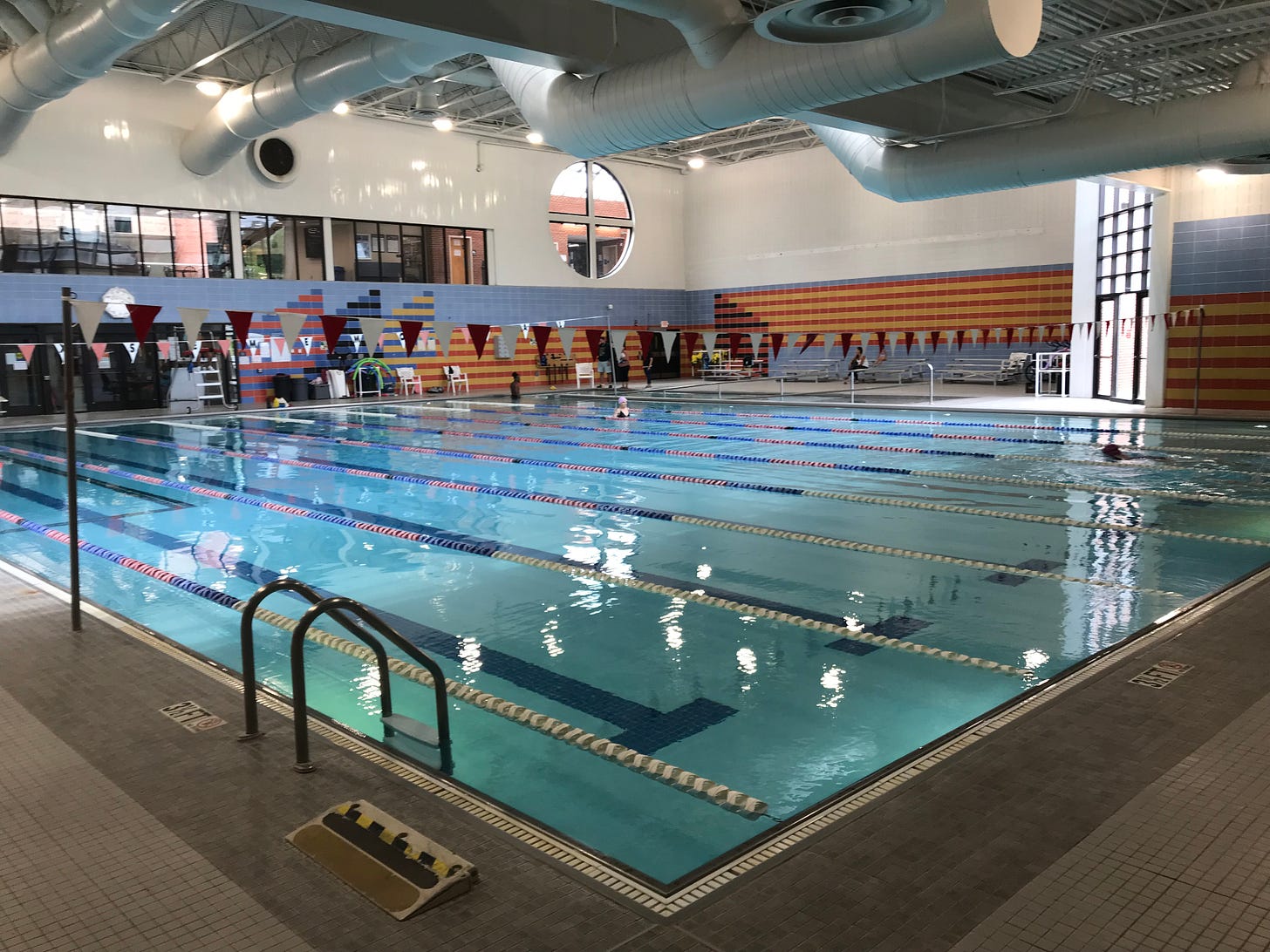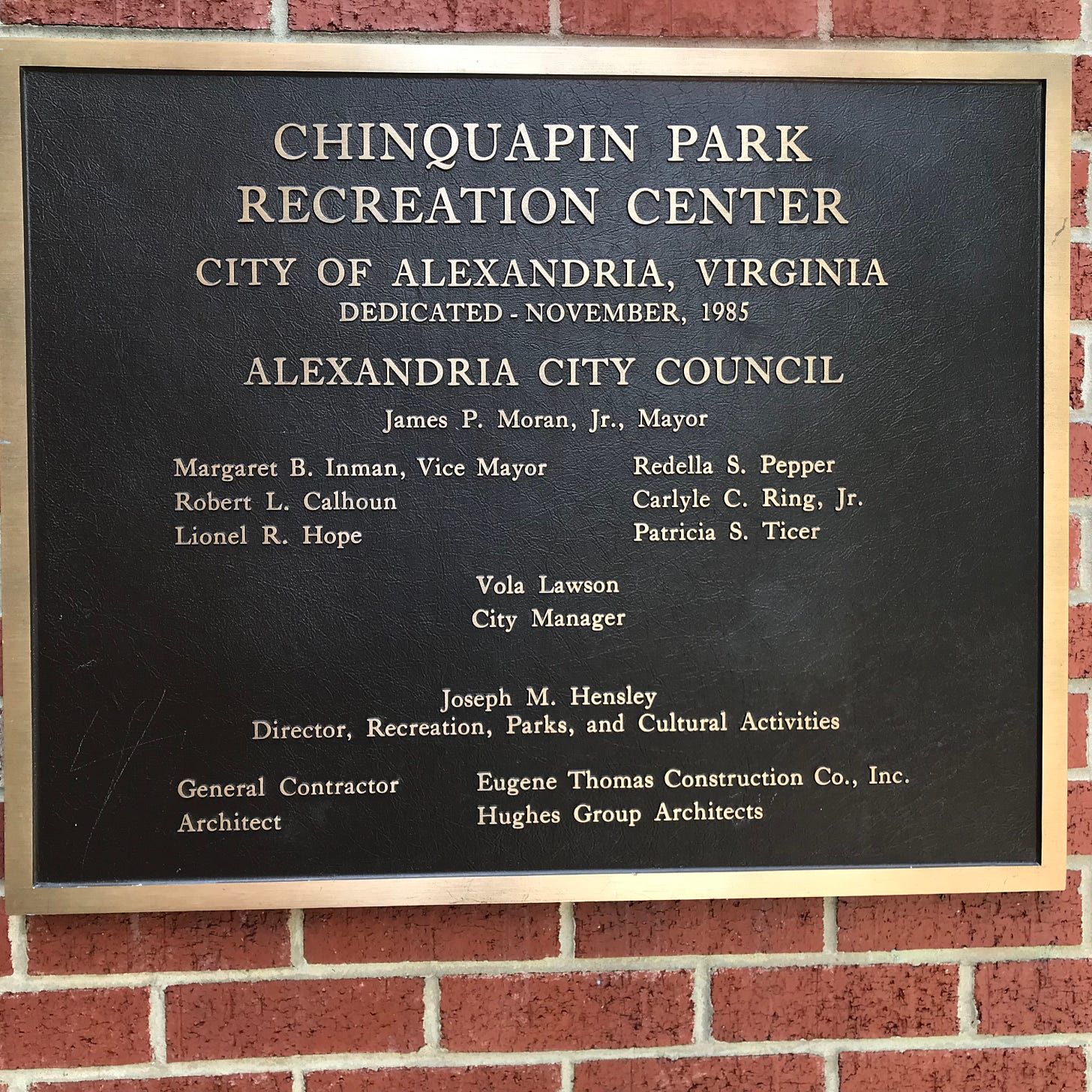
Alexandria’s urban legends are fascinating. They include the various answers to this question: How, in 1985, was the Chinquapin Park Recreation Center opened next to the city’s only public high school with a pool that was not configured for swimming competitions?
The result was decades of bus and car rides for high school students, coaches and swim and dive supporters to meets at other facilities with competition-length pools, for example, the Mount Vernon Recreation Center. In competitive swimming, thousandths of a second separate world record holders from the rest. Stainless steel pools are favored for Olympic and other elite competitions because they can be built to precise tolerances. Alexandria also lost the rental income that a 25-yard pool could have generated from private school and club swimming events.
I looked into why the Chinquapin pool, formally, the Rixse Memorial Pool, was built with lanes slightly too long for competition purposes. The pool is also too shallow at the end nearest King Street for diving from competition starting blocks. One initially promising explanation was that the pool was specified to be built in yards but was constructed in meters. This seems unlikely because the pool is a unique length unsuitable for competition in either yards or meters.
Discussions with Alexandrians present when, or shortly after, the pool was built yielded several possible explanations.
• The “pool ahead of its time” explanation: This explanation is that the pool was configured to meet expected changes in competition requirements by swimming meet authorities that were never adopted.
• The “mistake in pool construction” explanation: This version attributes the size of the pool to a construction error by the original contractor. A variation is that there were two contractors on the job; the first one ran into problems and the successor firm did not check the work of its predecessor.
• The “community pool” explanation: This account asserts that the size of the pool is not a bug, but a feature. That is, the pool was deliberately built to be unusable for swimming competitions to keep high school students out. This explanation assumes that the pool was built for “the community,” defined as excluding the students next door.
• The “oops, our bad” explanation: During planning, nobody considered that the pool could have been used for competitive swimming by the high school or clubs.
The definitive explanation for Chinquapin pool’s configuration may be lost in the mists of time. Amado Fernandez, a senior architect with the Hughes Group, the architecture firm that designed Chinquapin, told me that the structural plans for the pool provide only that, “the pool is somewhere around 82’-0” long (25M).” The Chinquapin pool shows that infrastructure decisions can have decades-long consequences.
Please send your tips, hunches and guesses about the mystery of Chinquapin pool to aboutalexandria@gmail.com.
The writer is a former lawyer, member of the Alexandria School Board from 1997 to 2006, and English teacher from 2007 to 2021 at T.C. Williams High School, now Alexandria City High School. He can be reached at aboutalexandria@gmail.com. Subscriptions to his newsletter are available free at https:// aboutalexandria.substack.com/






very helpful actually, thanks!